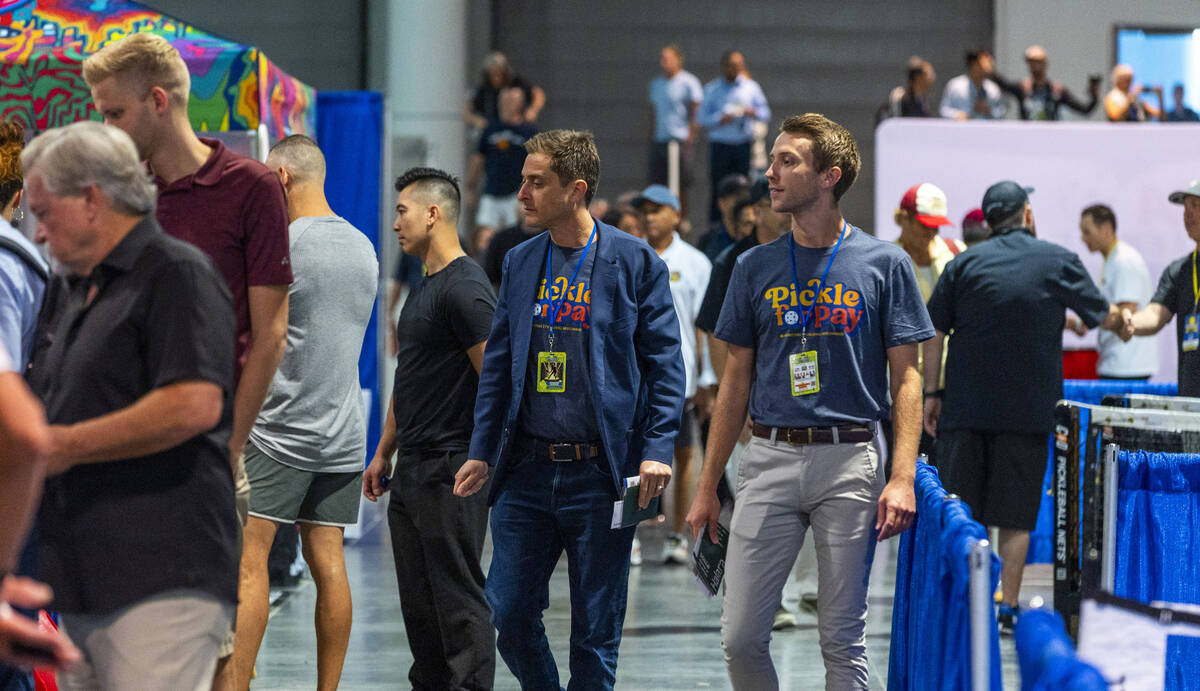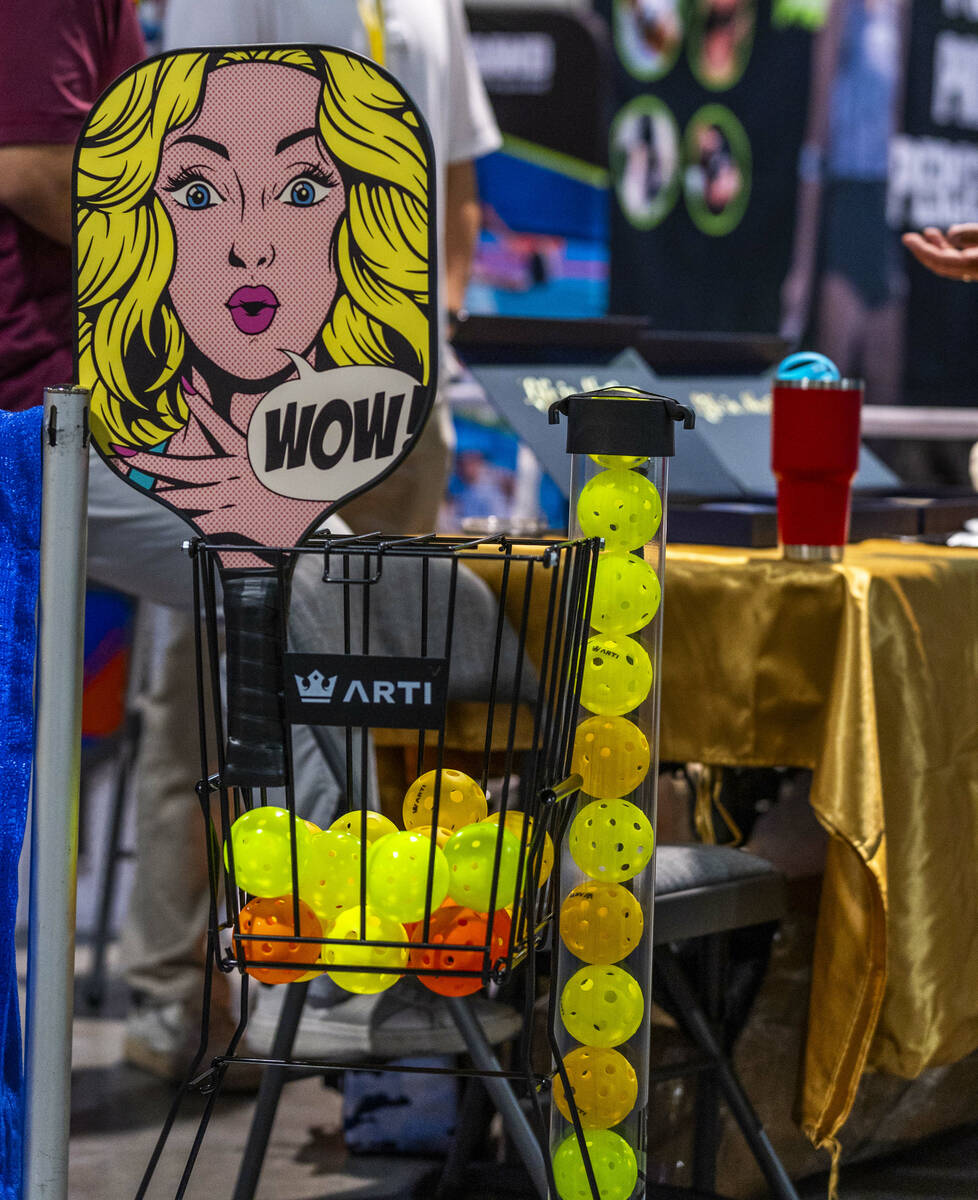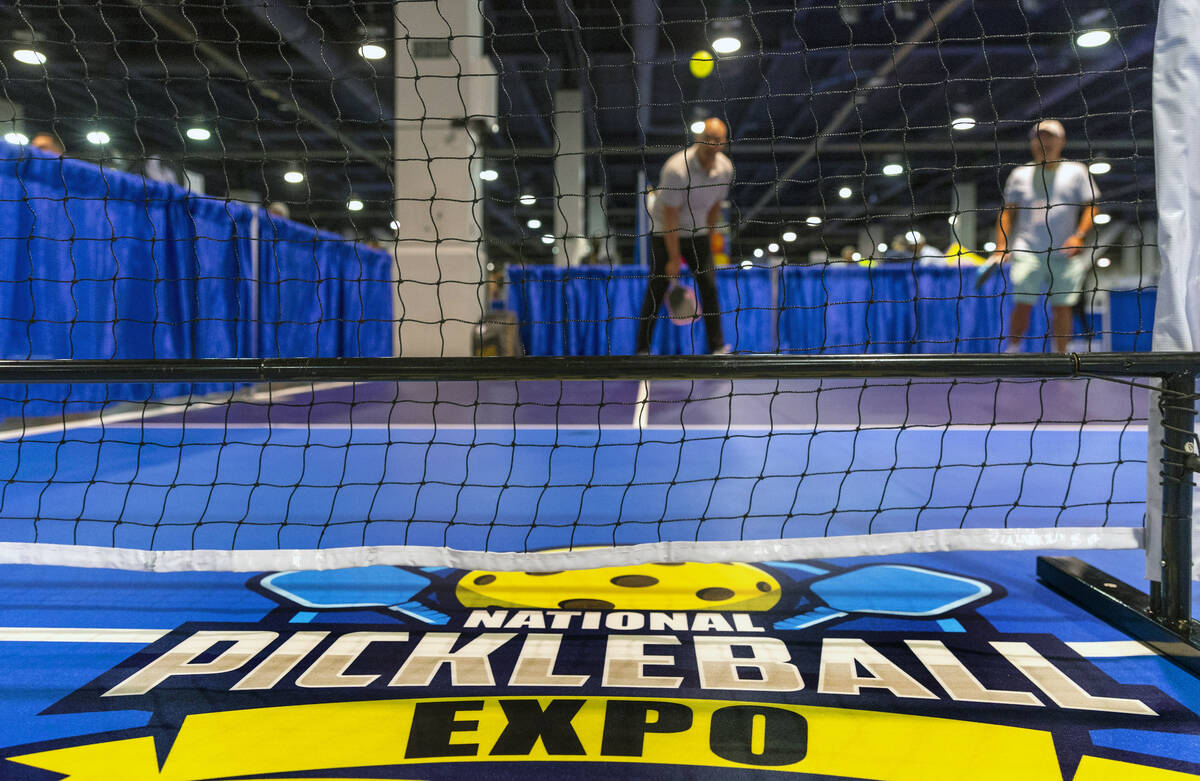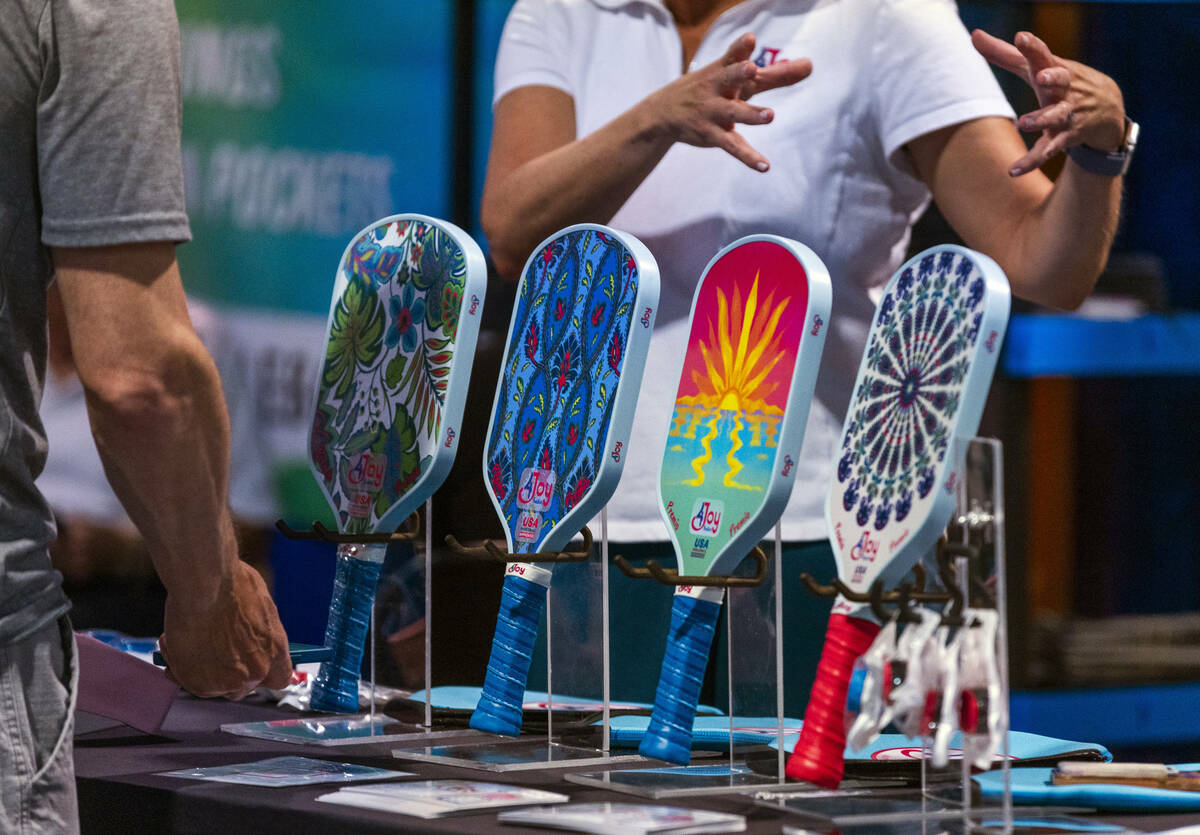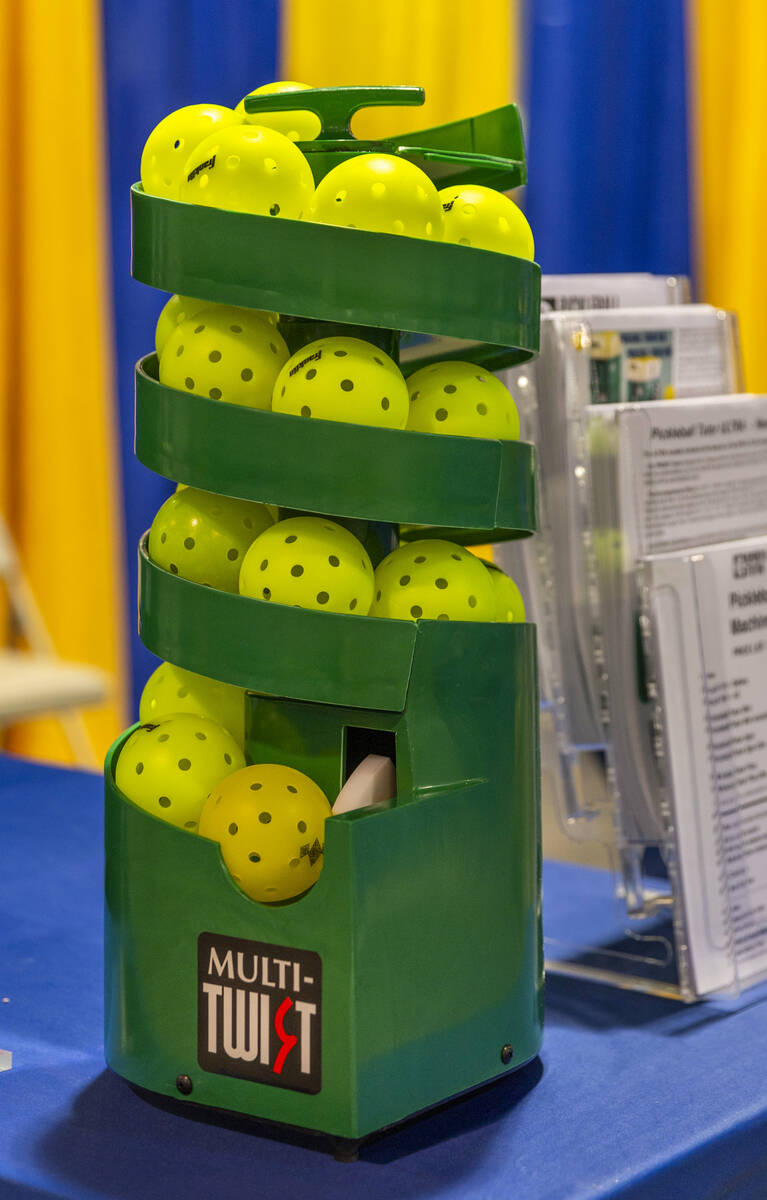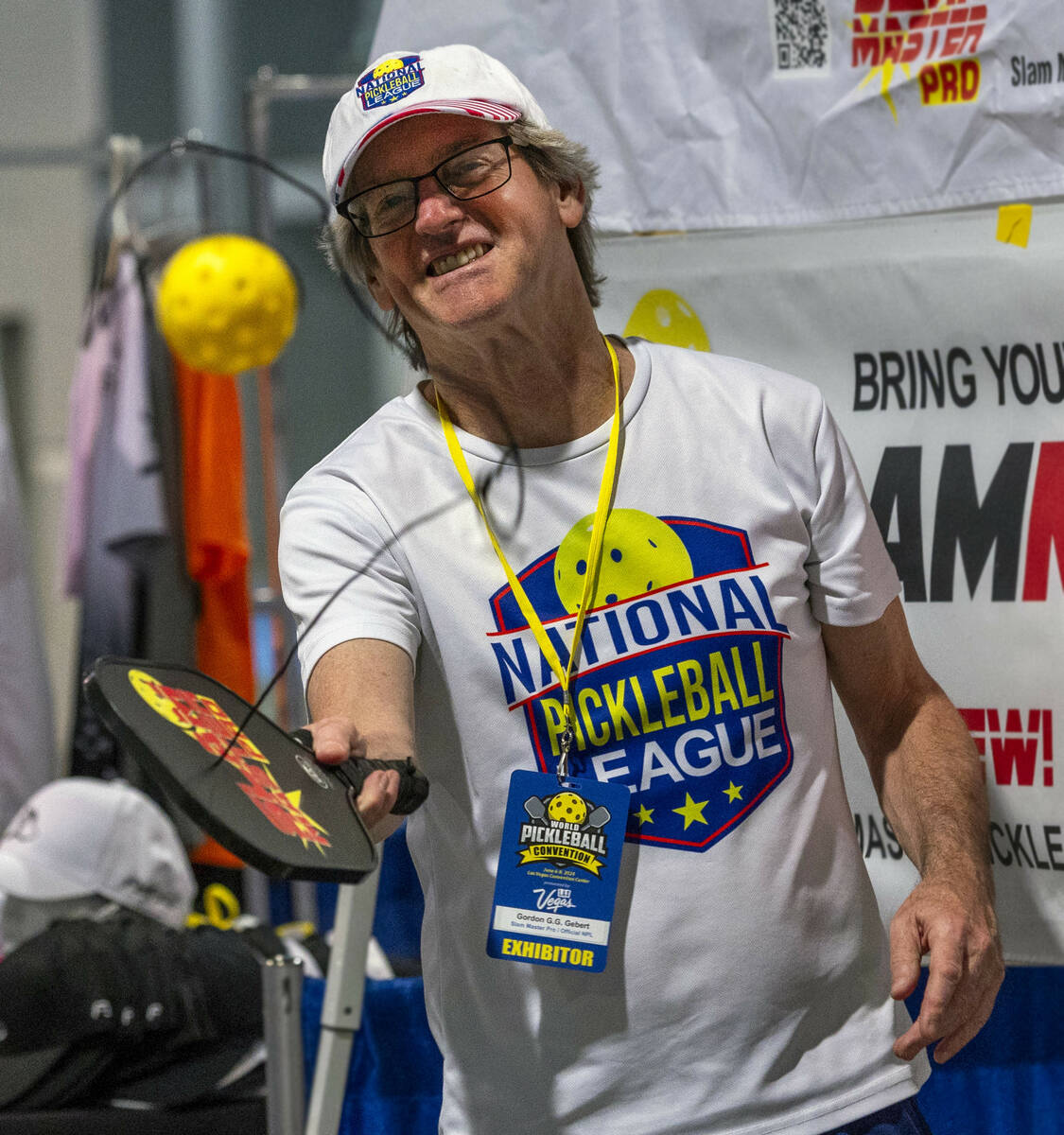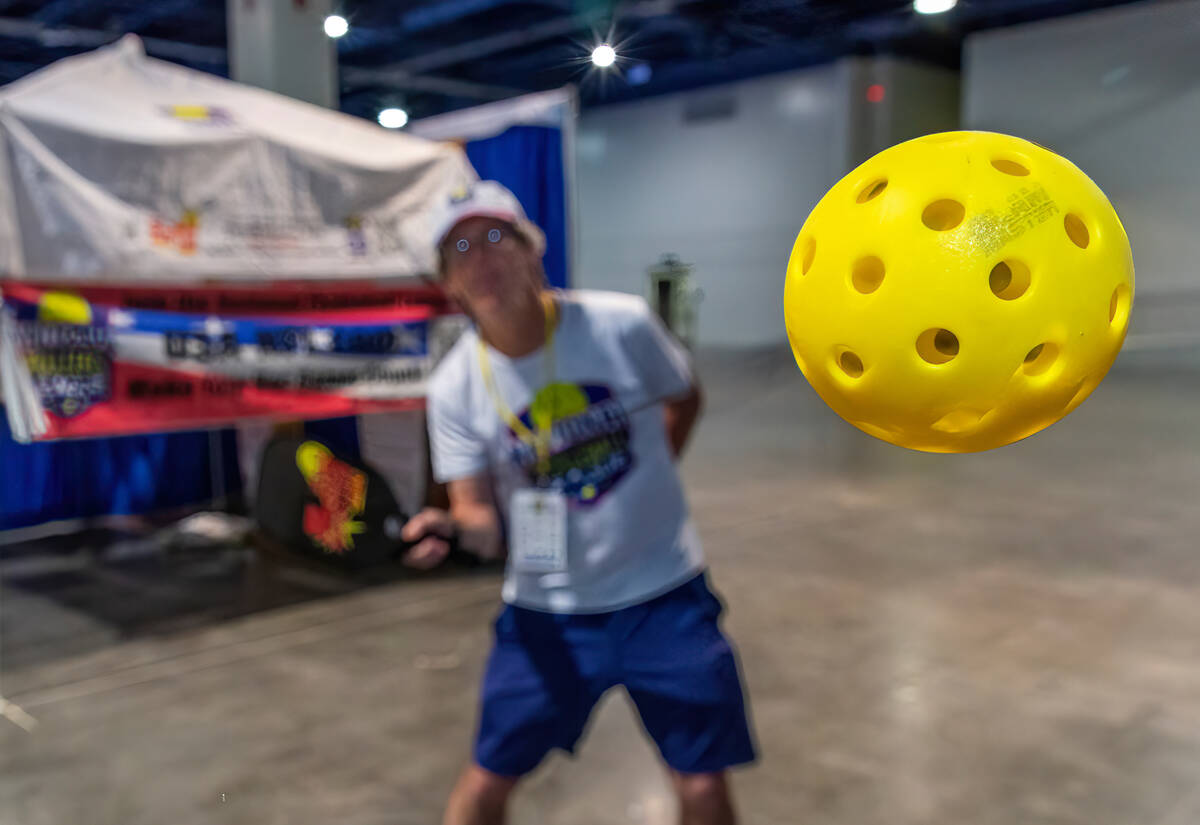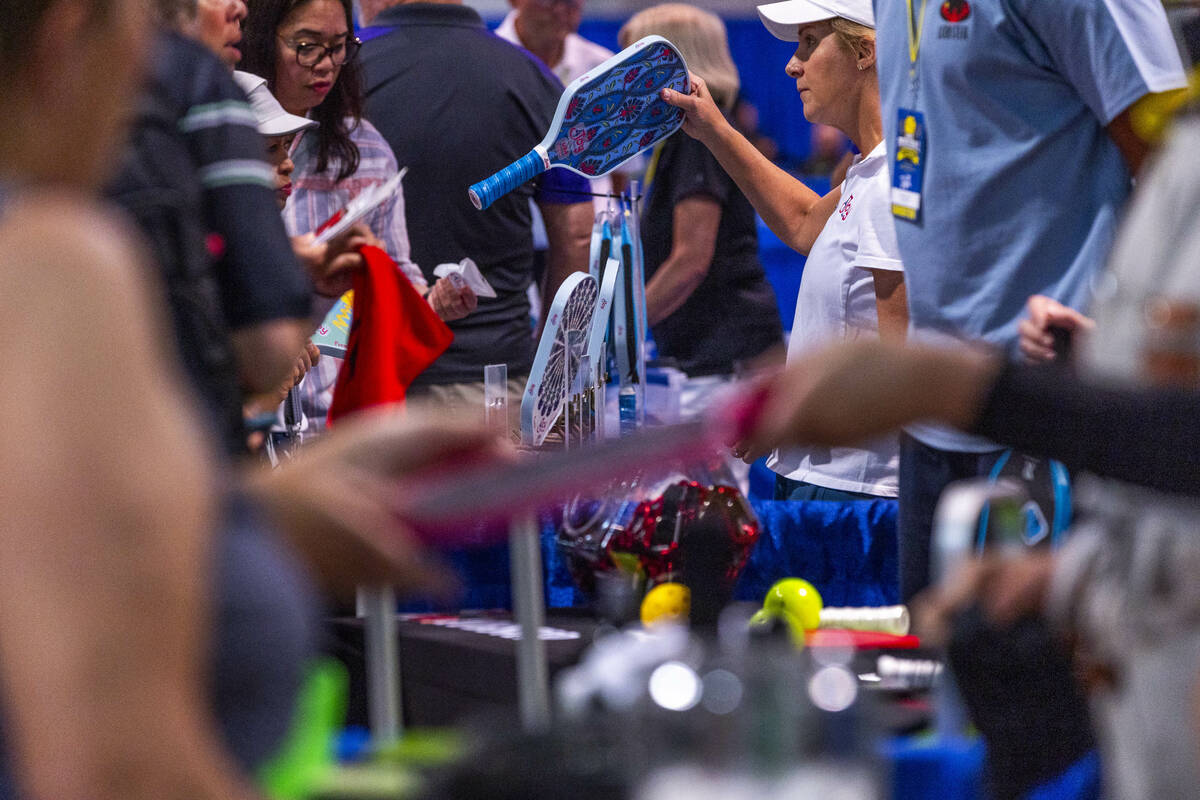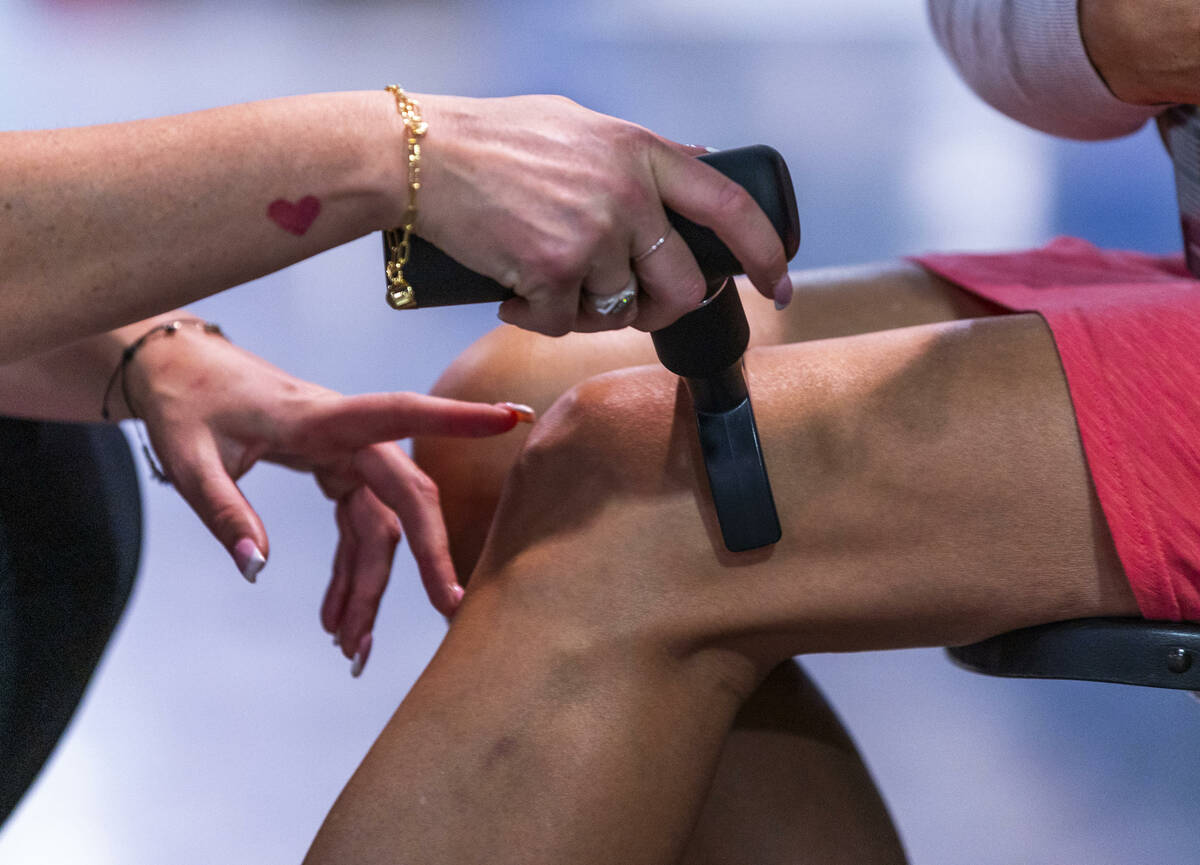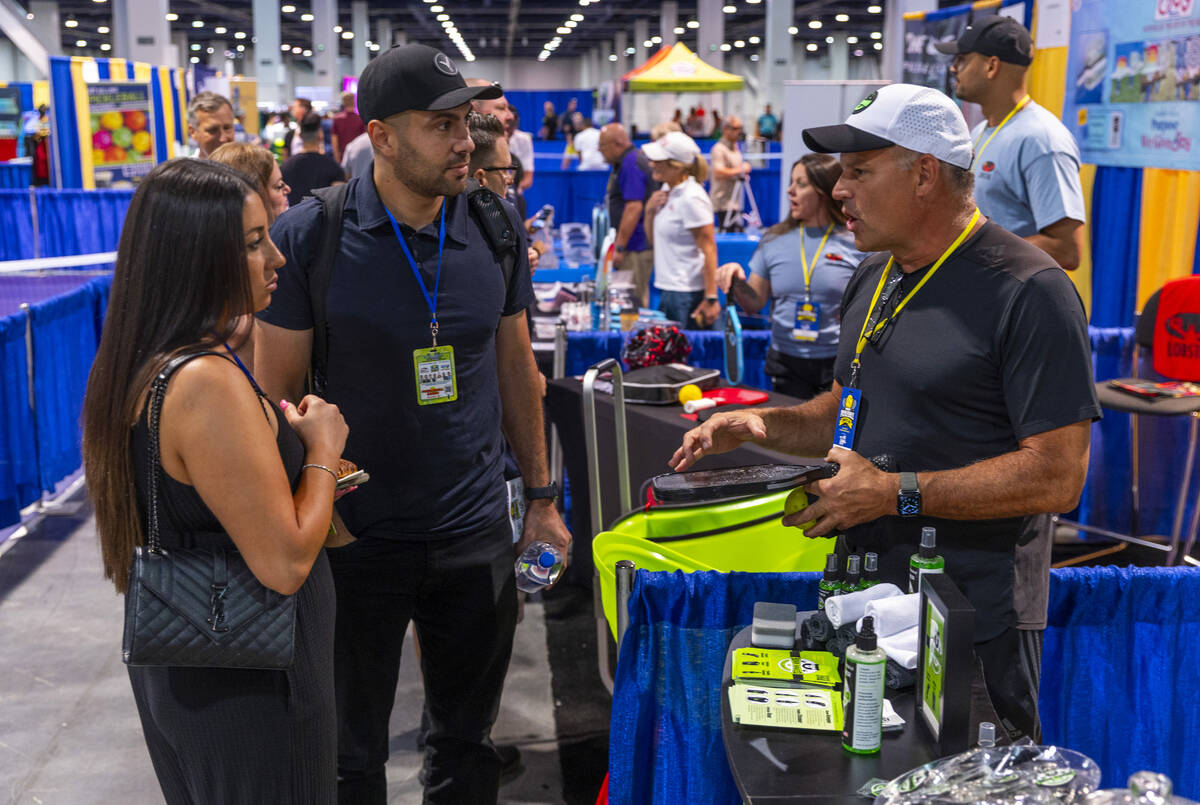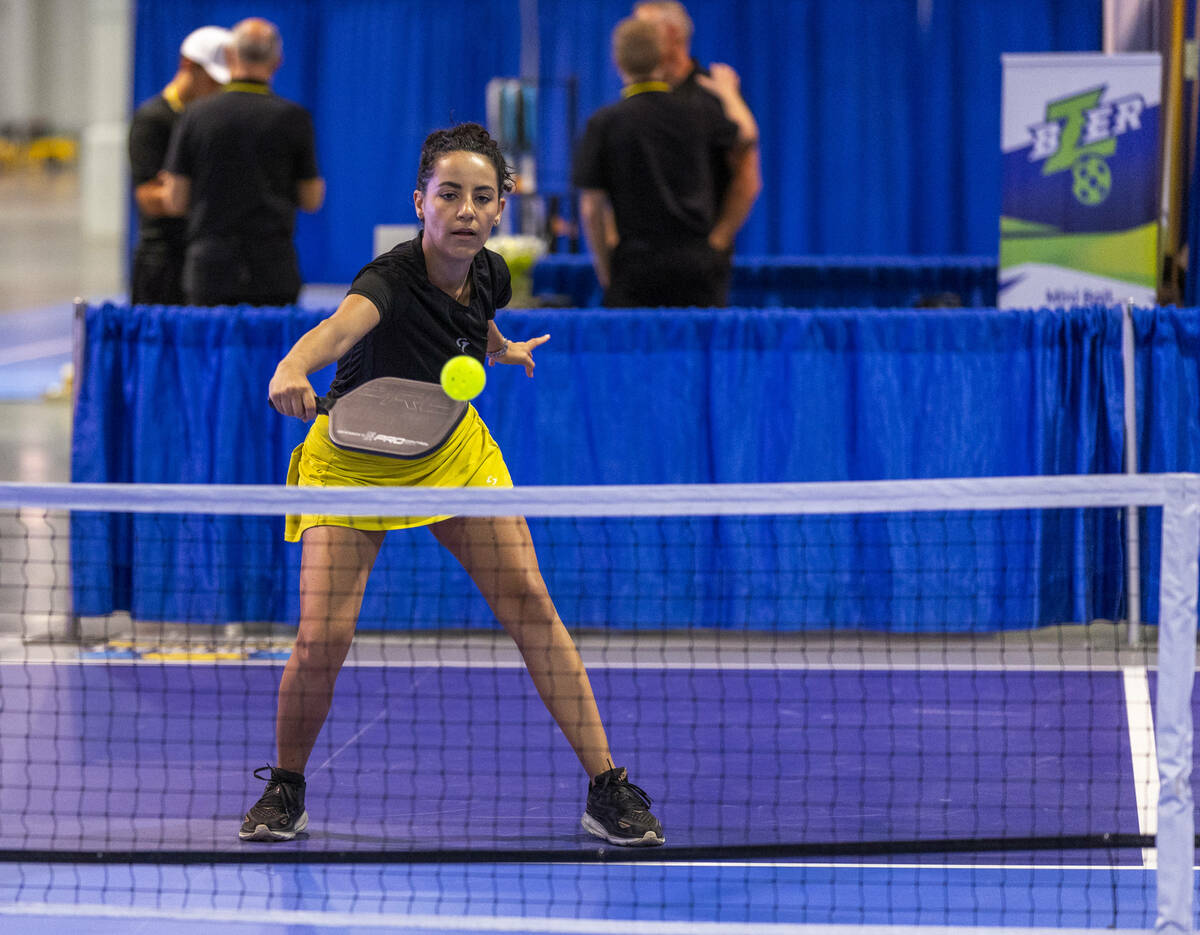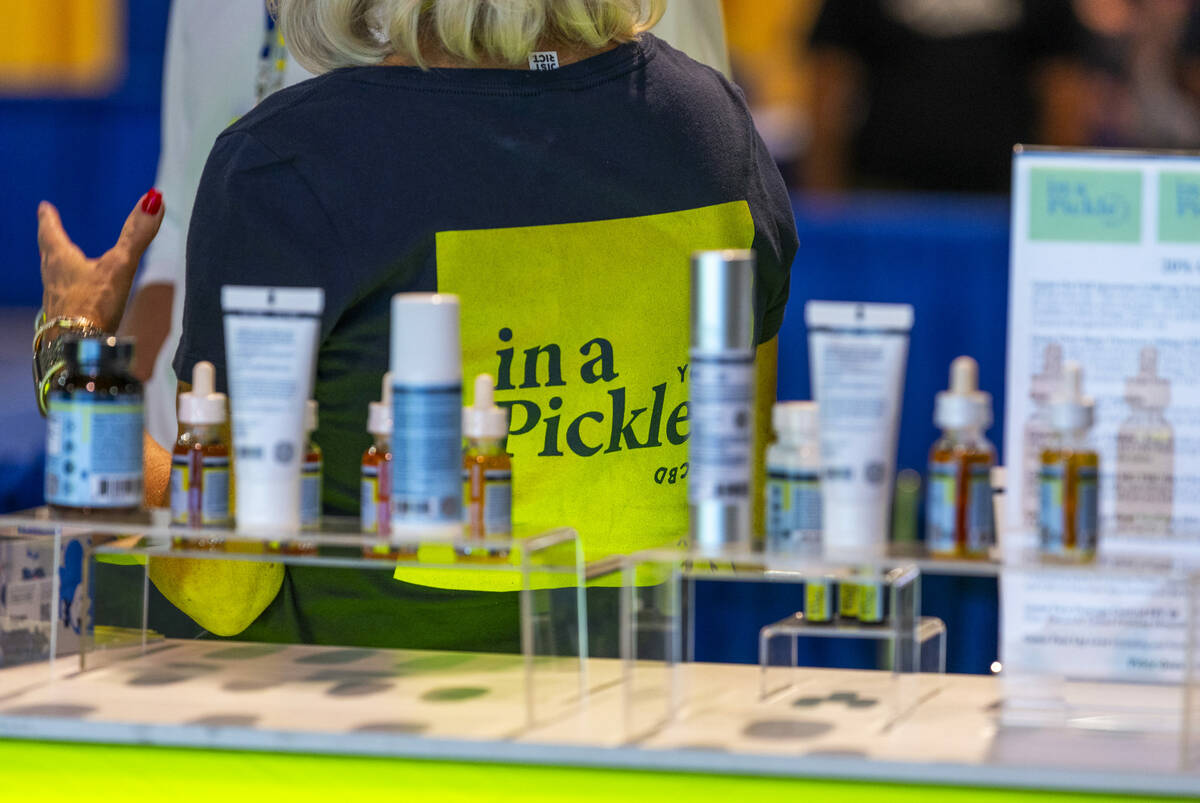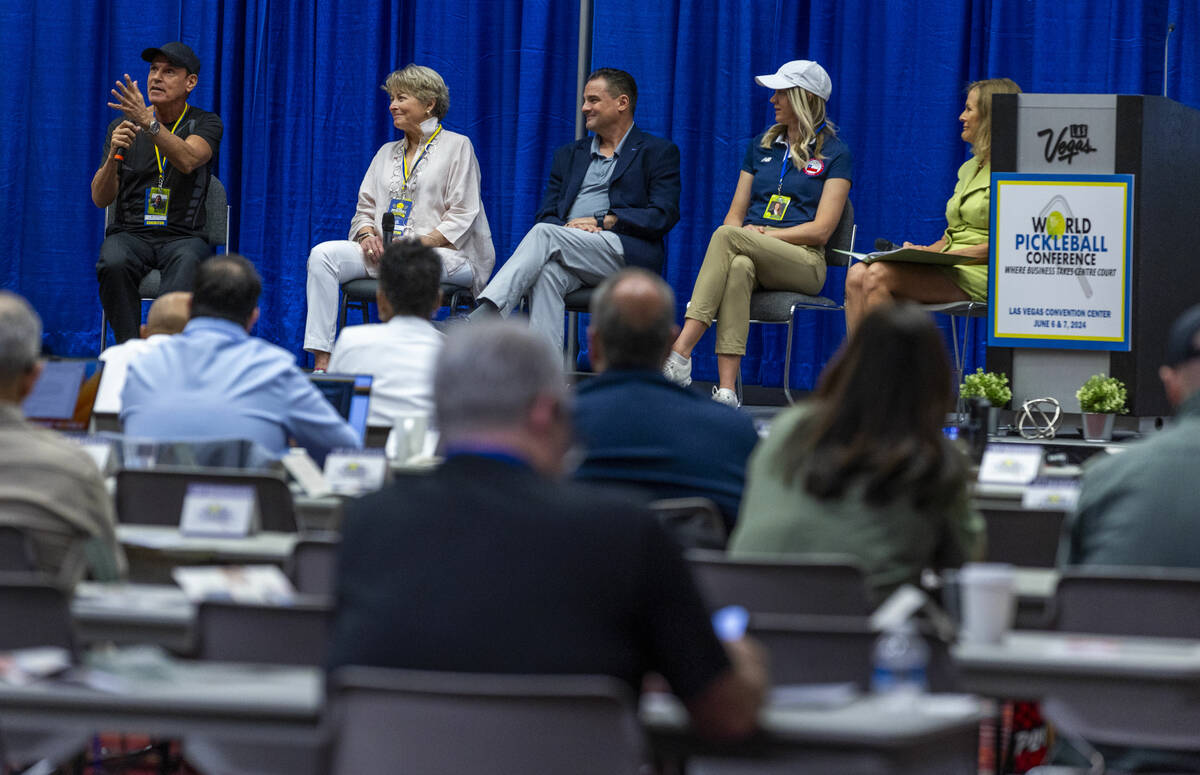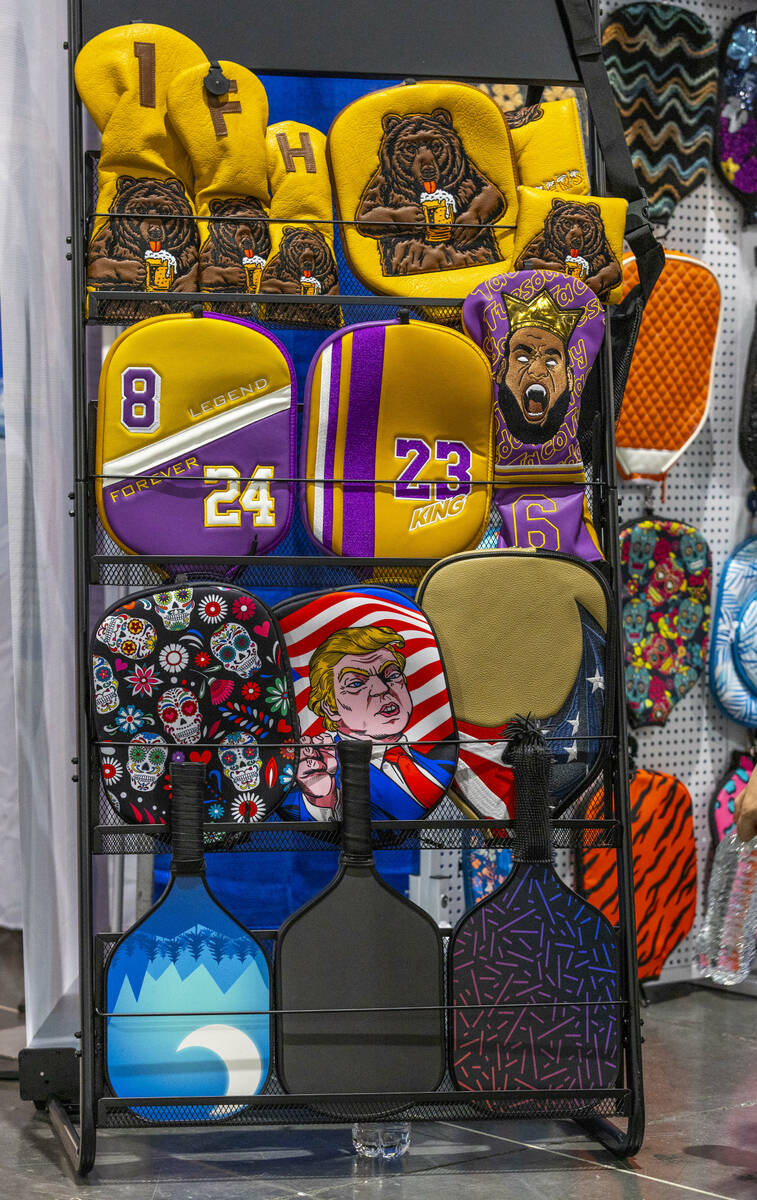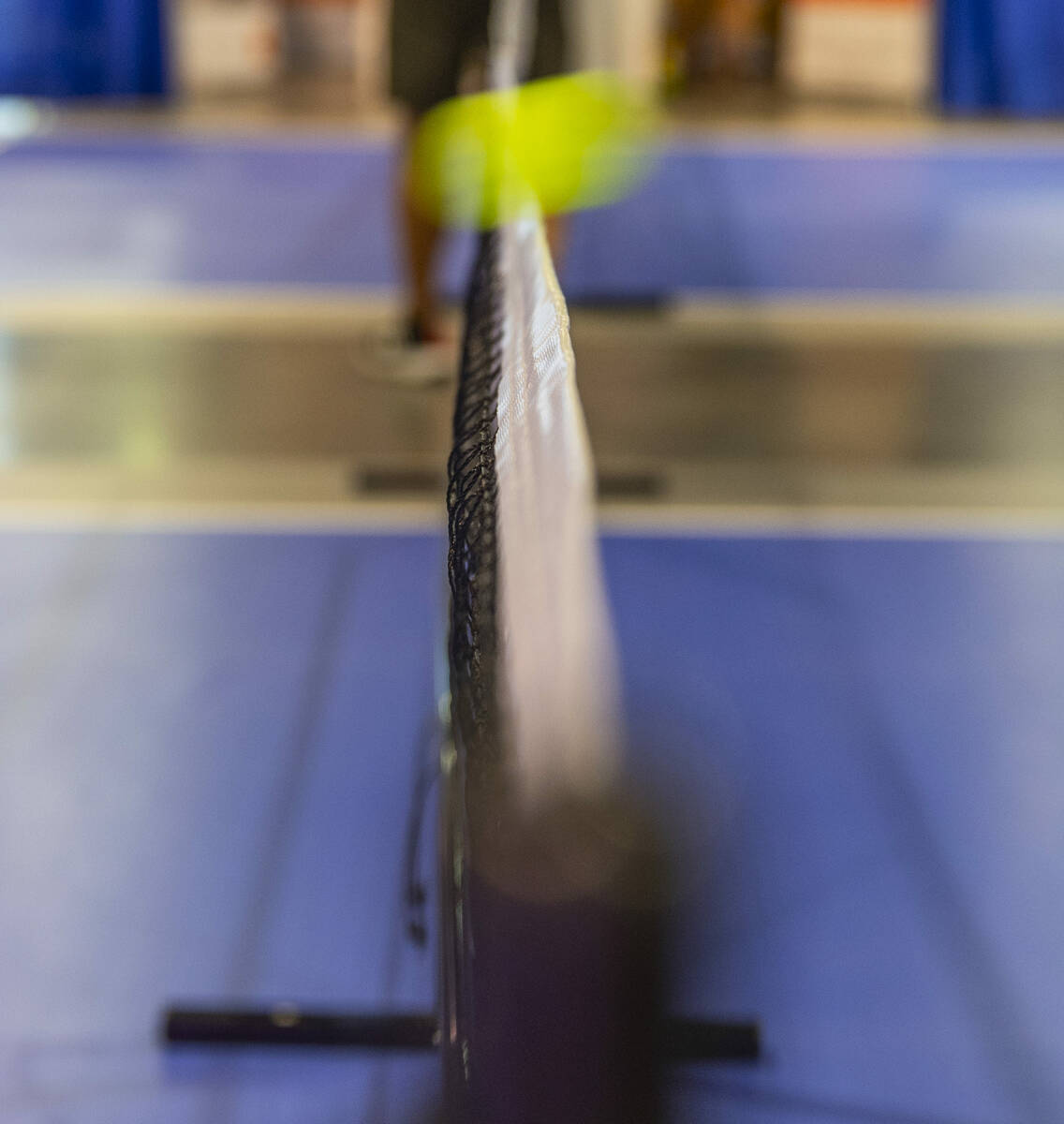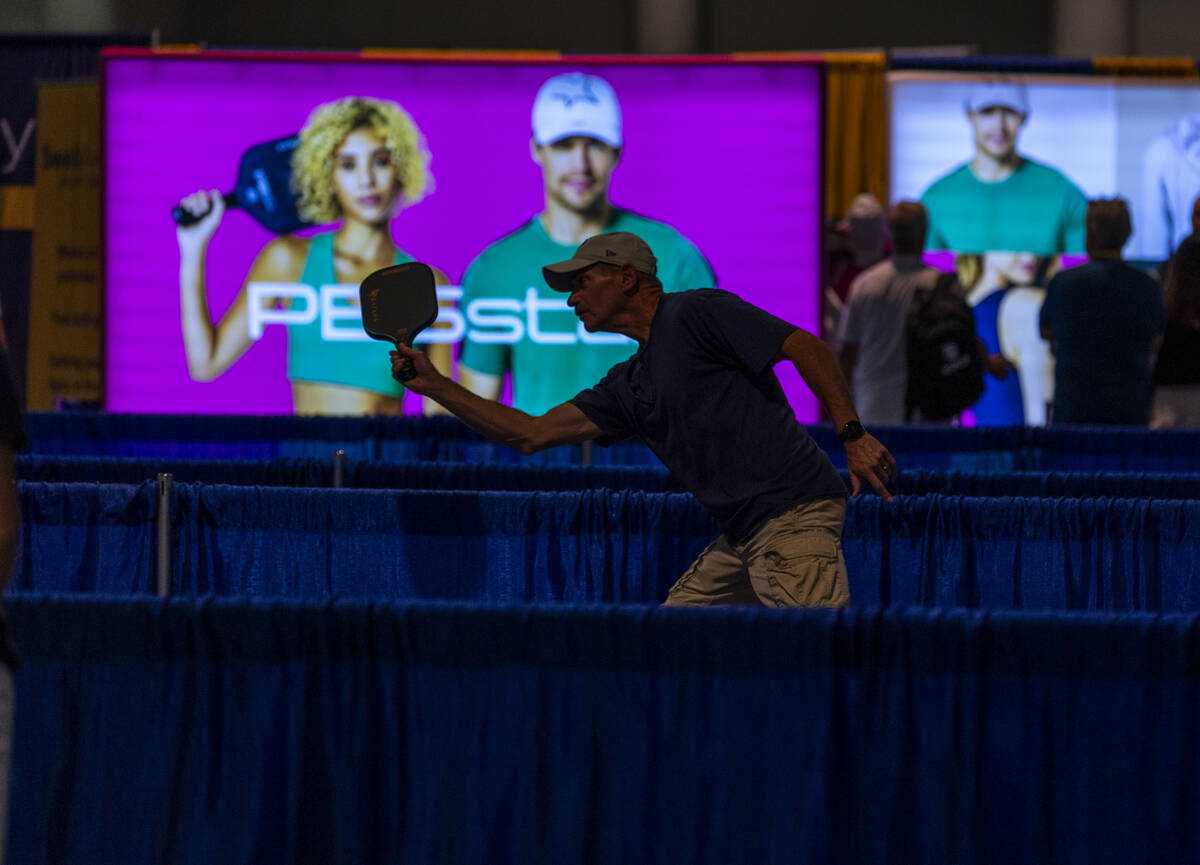‘Dink around and find out’: Inside the first World Pickleball Conference
The room’s abuzz with dinkers.
Anticipation, perforated plastic balls — both hang in the air this morning.
Soon, lines will form downstairs for free samples of dill-flavored electrolyte shots, while others queue up to learn about these high-tech $150 paddles whose guts derive from technology indebted to the aeronautics industry.
But first, an announcement.
“Here we are,” booms George Domaceti, a former Navy SEAL whose broad shoulders rival the width of a railroad tie. “Just getting ready to open up the first-ever pickleball convention and conference.”
And with that, the CEO of the World Pickleball Conference steps aside for the “The 2024 State of the Union of USA Pickleball” address, which takes place at a bit past 9 a.m. on Thursday in a conference room on the second floor of the Las Vegas Convention Center’s South Hall.
Robert Quicksilver, USA Pickleball chairman, opens with some good news, speaking to a room of pickleball aficionados and industry types, whose aforementioned nickname derives from the ‘dink,’ a soft shot hit close to the net.
“According to the Sports and Fitness Industry Association, pickleball participation has grown at an astonishing rate of 225 percent over the past few years,” he says. “By any standard, that’s just incredible.”
And that’s not all.
“According to our data, there are now approximately 12,000 venues nationwide, nearly double the amount that existed in 2020,” he says, noting that his organization is involved in over $300 million worth of pickleball-related projects. “In 2023 alone, over 1,100 new sites were launched.”
Vegas is also getting in on the world’s fastest-growing sport, big time: Not only do we have over three dozen pickleball locations around the valley and our own pro pickleball team — the Las Vegas Night Owls, whose ownership group includes former NFL great Tom Brady, tennis Hall of Famer Kim Clijsters and others — but the Chicken N Pickle restaurant/pickleball chain is also coming to Henderson soon.
In short, pickleball is white hot.
And there is no greater validation for anything, ever — from the concrete industry to the “Star Trek” fan base — than to get its own convention in the convention capital of the world.
Now, with the debut of the World Pickleball Convention, which features over 100 vendors and 52 speakers from 11 different countries, the sport’s coronation is officially complete.
“Everything’s popping up: ‘Pickle this,’ ‘pickle that,’” notes Carl Foster, host of the “Inside World Pickleball” TV show, who emcees the convention’s panel discussions. “Just about anything ‘pickle’ is on the horizon.”
Think he’s being hyperbolic?
An hour later, we head down to the exhibition hall.
The first product we encounter: The PickleZapper, an electronic bug exterminator shaped like — what else? — a pickleball racket.
A sport born in a backyard
And now for a quick round of pickleball question-and-answer time with Stu Upson, head of the Pickleball Hall of Fame — yes, there’s a Pickleball Hall of Fame, it’s virtual and has been around since 2017 — who’s giving a talk on the history of the sport.
A hand shoots up from the crowd.
“Can you clarify where the name came from?” a man asks.
“No,” Upson responds flatly.
OK, so we don’t know exactly why pickleball is called ‘pickleball’ — there are two theories, we’ll get there soon — but here’s what we do know: The sport was started back in 1965 in Bainbridge, Island, Washington, by former Washington state Congressman Joel Pritchard and a buddy who came home one summer day after a golf outing to find their families bored.
Pritchard’s property had a badminton court on it, but they didn’t have the rackets, so they made do by playing with pingpong paddles and a plastic ball, eventually lowering the net. Another friend of the family was introduced to the new game soon thereafter and helped create the rules.
And with that, pickleball was born.
As for the sport’s brine-indebted handle, there’s debate on how that came to be: some argue that it’s named after the Pritchard family dog, Pickles.
Others believe that it’s related to rowing.
“In the sport of rowing, which is huge in the state of Washington, there are pickle boats that go out at the end of a regatta,” Upson explains, “and they’re made up of all of the rowers leftover who weren’t in the main regatta. And that’s kind of how pickleball was created: from leftovers from all these other sports.”
“But there are members of the families who disagree,” he continues. “Some say the dog Pickles didn’t come until after the game was created. Nobody really knows — so let’s just keep it that way.”
OK, back to the convention.
Pickleball, it’s not just for grandpa
You have to watch your feet when navigating this maze of vendors hawking pickleball socks, paddle covers adorned with images of LeBron James and patriotic bald eagles in sunglasses and Uncle Sam hats, and towels that read “Dink around and find out.”
With pickleball matches taking place on a trio of courts in the exhibition hall during the convention, the sport’s signature plastic balls are frequently whacked underfoot of passersby.
For a low-tech sport, there are plenty of high-tech offerings here: an AI-enhanced SmartCourt video platform from PlaySight, the Stemregen stem cell enhancer to improve recovery and performance, and fancy, cutting-edge paddles from Gearbox.
“This technology comes from aerospace, essentially,” says Gearbox founder Rafael Filippini, demonstrating one of his wares to us. “This is a bladder-molded, internally pressurized structure, where honeycomb paddles are usually a sandwich structure,” he explains as we stare at him blankly, his words soaring over our head like high-flying aircraft.
Thoroughly befuddled, we head to a vendor whose product we can grasp a bit more readily: Pickleball Cards. “Like Baseball Cards … but way more FUN! … and they are digital! … and they feature YOU!” their sign reads.
That’s right, you can now get your own pickleball card to trade with your friends or maybe put in the spokes of your bicycle to make it sound like a motorcycle.
The card booth is manned in part by Larry Strumwasser, a local teacher and trainer at the Sun City Anthem Pickleball Club.
“We started in 2010 with 30 members,” notes Strumwasser, who’s almost 70 and plays six or seven days a week. “It’s now 2024, we have 520 pickleball players. We started out with two courts; we now have a dozen courts — and eight more under construction.”
What’s driving this surge in pickleball popularity?
The sport’s growth in recent years can be traced to the pandemic.
“When COVID hit, people needed a place to play,” Upson notes, “some activity they could do easily, do outside and have their social distancing.”
Peter Martinez, international and national sales manager for Sports Tutor, which creates pickleball throwing machines, saw his business impacted directly.
“The pandemic helped boost our sales tremendously,” he says. “The pandemic was our biggest year ever.”
There are other intangibles at work propelling pickleball’s rise, namely the ease with which the sport can be picked up: It’s easy to learn and low cost — unless you’re springing for one of Gearbox’s upscale paddles.
But pickleball’s rise hasn’t been without its challenges: Its growth has outpaced the construction of new facilities, resulting in wars with the tennis community over court time. And the noise from plastic-ball-hitting-paddle has cheesed off some homeowner’s associations, resulting in the shuttering of courts — several companies here sell “quiet” paddles to reduce sound pollution.
And then there’s the lingering perception that pickleball is your grandparents’ sport.
“When I first joined the board in 2018, the most common question — always asked in a friendly manner — was, what the heck is pickleball?” Quicksilver recalls of what strangers would most frequently ask him about said sport. “About a year-and-a half later, many of the inquiries — as well as the tone — would change dramatically to, ‘Why are the old people taking over the tennis courts in my city park?’”
Quicksilver notes that pickleball’s largest demographic group is now between the ages of 35 and 49.
The modestly sized crowd here on Thursday morning is mixed age-wise, with a few hundred attendees ranging from young kids to twenty-somethings to septuagenarians.
Sid Crossley, a native of Newport Beach, California, is among the pickleball faithful in the house, having played for the past 12 years.
“I didn’t know what to expect, but it’s interesting,” he says of the convention, having heard about it from a friend while in town vacationing with his wife. “It’s interesting to see the different vendors and talk to them. Everyone seems to be pretty excited.”
Quicksilver certainly embodies this enthusiasm.
He speaks of the sport in near-revolutionary terms.
“Pickleball is the very rare place where race, age, athleticism, gender, political affiliation, income level or other demographic data point does not divide us,” he says. “On the pickleball court, we all come together as one.”
United, we dink.
Contact Jason Bracelin at jbracelin@reviewjournal.com or 702-383-0476. Follow @jbracelin76 on Instagram




